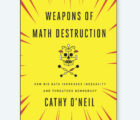An ultimate loss method and an E-Forum paper will be inducted into the Reserving Research Hall of Fame (RRHOF) at the 2018 Casualty Loss Reserve Seminar in September.
The inductees are:
- Hans Bühlmann and James N. Stanard for their work in developing the Stanard-Bühlmann/Cape Cod method.
- “On the Accuracy of Loss Reserving Methodology,” written by Tapio N. Boles and Andrew Jon Staudt and published in Casualty Actuarial Society E-Forum, Fall 2010, Volume 1.
Two years ago, the CAS Reserves Committee established the Reserving Research Hall of Fame (RRHOF) to honor and draw attention to important reserving-related research. The inaugural RRHOF class, announced at the 2016 Casualty Loss Reserve Seminar, included papers by Thomas Mack, Ronald Bornhuetter and Ronald Ferguson, and James Berquist and Richard Sherman.
This spring, the CAS Reserves Committee announced five nominees for the second RRHOF class. CAS members and interested parties were invited — via Weekly Bulletin emails, Facebook posts, LinkedIn posts and tweets — to visit the RRHOF webpage and rank the nominees. The CAS Reserves Committee considered the voting results and the comments received when selecting the second class of inductees.
Bühlmann and Stanard independently derived the Stanard-Bühlmann/Cape Cod method. The Stanard-Bühlmann method is similar to the Bornhuetter-Ferguson method in that projected ultimate losses are split into two components: actual reported and expected unreported. The main difference between the two methods is in the selection of the initial expected loss ratio. While the selection of the ratio in the Bornhuetter-Ferguson method is often subjective and typically relies heavily on prior experience and judgment, the analogous parameter under the Stanard-Bühlmann method is calculated using the experience reported to date.
The CAS Reserves Committee established the Reserving Research Hall of Fame to honor important reserve-related research. An ultimate loss method and an E-Forum paper will be inducted into the RRHOF at the 2018 CLRS.
The Boles and Staudt paper evaluates the performance of various loss reserving methods and their associated parameterizations under a variety of environmental changes, such as inflation, changes in case reserve adequacy, and changes in claims settlement practices. The authors offer the reserving actuary a roadmap for selecting appropriate methodologies and parameterizations given the past, current and expected future environmental conditions affecting the reserving process.
RRHOF inductees can include papers, articles, presentations, models, an author’s body of work, and other reserve-related research. The CAS Reserves Committee considers the following criteria when reviewing potential RRHOF nominees and inductees:
- Originality/value added.
- Wide applicability.
- Frequently referenced.
- Readability/user-friendliness.
- Test of time/staying power/lasting influence.
Nominees and inductees do not have to meet each of these criteria, but the list may serve as a helpful starting point for thinking about the impact a piece of research has had on reserving practice.
CAS members played an important role in the selection of the second class of inductees. Visit http://www.casact.org/area/reserve/index.cfm?fa=hall-of-fame to nominate a candidate for the third RRHOF class and provide feedback on the RRHOF. Here you’ll also find information on the selection criteria and links to RRHOF inductee material. The CAS Reserves Committee plans to induct new members into the RRHOF every two to three years.
Julie Lederer, FCAS, MAAA, is a member of the CAS Reserves Committee and a copy editor for Actuarial Review. She works for the Missouri Department of Insurance, Financial Institutions and Professional Registration.











